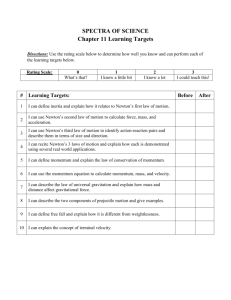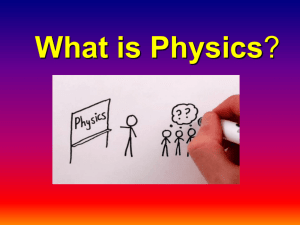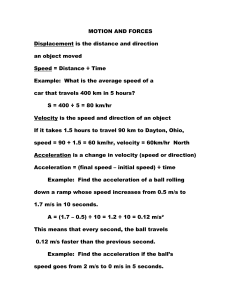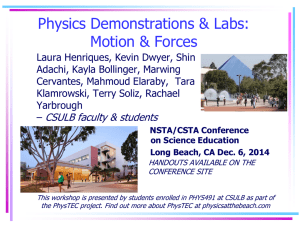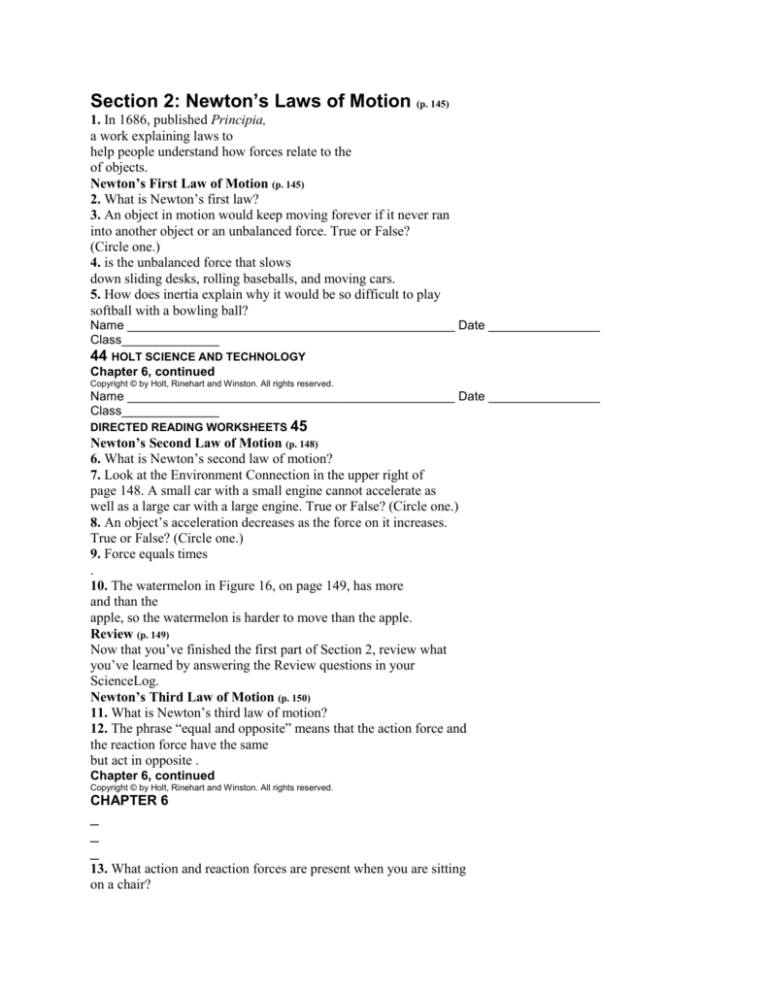
Section 2: Newton’s Laws of Motion (p. 145)
1. In 1686, published Principia,
a work explaining laws to
help people understand how forces relate to the
of objects.
Newton’s First Law of Motion (p. 145)
2. What is Newton’s first law?
3. An object in motion would keep moving forever if it never ran
into another object or an unbalanced force. True or False?
(Circle one.)
4. is the unbalanced force that slows
down sliding desks, rolling baseballs, and moving cars.
5. How does inertia explain why it would be so difficult to play
softball with a bowling ball?
Name _______________________________________________ Date ________________
Class______________
44 HOLT SCIENCE AND TECHNOLOGY
Chapter 6, continued
Copyright © by Holt, Rinehart and Winston. All rights reserved.
Name _______________________________________________ Date ________________
Class______________
DIRECTED READING WORKSHEETS 45
Newton’s Second Law of Motion (p. 148)
6. What is Newton’s second law of motion?
7. Look at the Environment Connection in the upper right of
page 148. A small car with a small engine cannot accelerate as
well as a large car with a large engine. True or False? (Circle one.)
8. An object’s acceleration decreases as the force on it increases.
True or False? (Circle one.)
9. Force equals times
.
10. The watermelon in Figure 16, on page 149, has more
and than the
apple, so the watermelon is harder to move than the apple.
Review (p. 149)
Now that you’ve finished the first part of Section 2, review what
you’ve learned by answering the Review questions in your
ScienceLog.
Newton’s Third Law of Motion (p. 150)
11. What is Newton’s third law of motion?
12. The phrase “equal and opposite” means that the action force and
the reaction force have the same
but act in opposite .
Chapter 6, continued
Copyright © by Holt, Rinehart and Winston. All rights reserved.
CHAPTER 6
_
_
_
13. What action and reaction forces are present when you are sitting
on a chair?
14. In a force pair, the reaction and action forces affect the same
object. True or False? (Circle one.)
15. When a ball falls off a ledge, gravity pulls the ball toward Earth
and also pulls Earth toward the ball. True or False? (Circle one.)
Momentum Is a Property of Moving Objects (p. 152)
16. Why does it take longer for a large truck to stop than it does for
a compact car to stop, even though they are traveling at the
same velocity and the same braking force is applied?
17. Momentum depends on the and
of an object.
18. In Figure 19, on page 152, during the collision, the momentum
of the cue ball
a. is added to the total momentum.
b. is transferred to the billiard ball.
c. is transferred to the table holding the balls up.
d. stays with the cue ball.
19. The law of conservation of momentum states that any time two
or more objects interact, they may exchange momentum, but the
total amount of momentum stays the same. True or False?
(Circle one.)
Review (p. 153)
Now that you’ve finished Section 2, review what you’ve learned by
answering the Review questions in your ScienceLog.
Name _______________________________________________ Date ________________
Class______________




